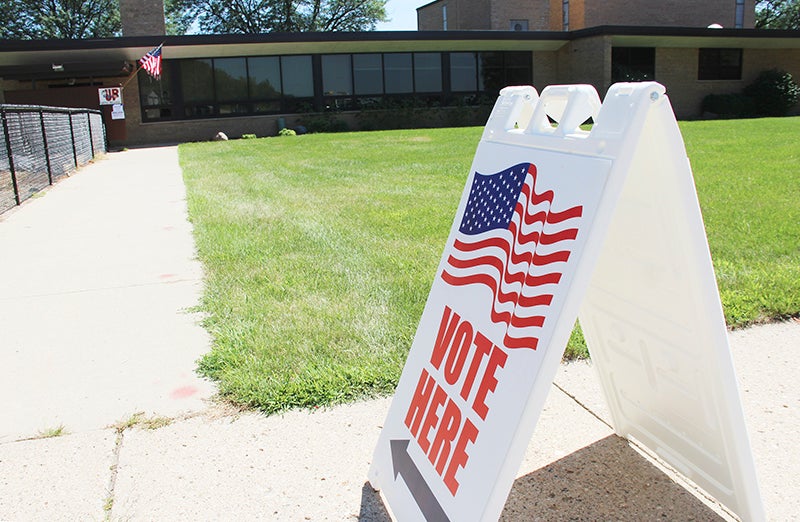Minnesota Chamber releases ‘best practices’
Published 9:30 pm Friday, April 24, 2020
|
Getting your Trinity Audio player ready...
|
Walz announces plan for some businesses to return to work
The Minnesota Chamber of Commerce Wednesday released “best practices” for employers and employees to return to work safely in the midst of the COVID-19 pandemic.
“Minnesota businesses are eager to get back to work,” said Chamber President Doug Loon. “We are ready to work with the Walz Administration and the Legislature to get our state back to full productivity and full employment as soon as reasonably possible. Business operations can and should return to a sustainable level without jeopardizing employees’ or customer safety. These guidelines were developed with that in mind and are applicable to most workplaces.”
The Chamber’s goal throughout this health crisis has been to strike a balance between safeguarding health and protecting the economy, Loon said. These guidelines underscore that commitment. The recommendations are gleaned from the detailed strategies of Minnesota companies still operating as deemed “essential” under Walz’s executive order.
“These best practices represent timely input from the state’s business community about how to protect Minnesota’s hard-won public health gains while allowing our vibrant business community to return to work,” Loon said.
The guidelines address:
• Employee and customer communications and education
• Personal protection and facilities cleaning
• Social distancing
• Customer engagement
• Vendor engagement
• Travel policies
• Tracking and treating sick employees
The full list of suggestions can be found at www.mnchamber.com. The online resources list industry-specific best practices with real-time success stories from companies that are getting it right for the workers and customers.
As he laid out his approach for gradually loosening restrictions on Minnesota businesses over time, Walz on Thursday announced his decision to allow certain non-critical businesses to safely return to work.
Developed in partnerships with hundreds of businesses, labor and worker organizations and public health experts, this action will allow 80,000 to 100,000 Minnesotans to return to work in industrial, manufacturing, and office settings on Monday.
“This is a limited first step in the process of safely reopening some businesses and returning Minnesotans to work,” said Department of Employment and Economic Development Commissioner Steve Grove. “We will continue to listen to and seek input from business and community leaders and work with public health experts on creative solutions to put more people back to work as safely and quickly as possible.”
Loon called the governor’s announcement “welcome news.”
“We appreciate the governor’s recognition of returning more businesses to protect our state’s economy,” he said. “Employers are taking meaningful steps to protect the health and safety of their employees. Others are poised to reopen responsibly and get our economy moving.”
As plans move forward to get Minnesotans back to work, local legislators feel that safety should be the main emphasis.
“Not every business owner or employee is eager to go back to work if there aren’t adequate safeguards in place,” said District 27B Rep. Jeanne Poppe, DFL-Austin. “The Legislature can support having testing capabilities and making sure there are adequate medical supplies and protective equipment. Individually, we can all keep maintaining the appropriate physical distancing requirements and wearing cloth masks when we are in public.”
District 27 Sen. Dan Sparks, DFL-Austin, said he was glad the governor continued to exempt workers and businesses from the stay-at-home order and add businesses that can operate to the list.
“The Legislature and the governor have collaborated on this, and we should take more steps to grow this list and continue finding ways to reopen commerce,” he said.
“We all know that a long-term shutdown of Minnesota businesses is simply not possible, and I support the necessary steps to enable businesses and workers to hit the ground running. However, we must also prioritize the health and safety of everyone — workers, supervisors, owners, customers and consumers.”
District 27A Rep. Peggy Bennett said reopening businesses requires thoughtful, smart decision-making that always keeps in mind the safety of people.
“I do believe many of our businesses can open with guidelines,” she said, referring to things such as physical distancing, sanitizing and wearing face masks.
“I believe one of the strengths of our country and our state is our creativity and our ability to work around and with difficult situations,” Bennett said.
She said she supports reopening businesses in phases.
“It’s critical,” she said. “Every week we go means more businesses closing. We’ve already lost some in Albert Lea, and there’s going to be more. That’s huge for rural Minnesota. Even in the metro it’s going to hit hard, but they have bigger businesses to hold them together.”
Prior to loosening restrictions for a given setting, businesses must:
• Create, share, and implement a COVID-19 preparedness plan that sets out the actions they are taking to ensure social distancing, worker hygiene, and facility cleaning and disinfection necessary to keep workers safe
• Engage in health screening of employees and ensure that sick employees stay home
• Continue to work from home whenever possible.
“I’m optimistic that Minnesota will be able to move more quickly than many of our neighboring states, but it will be challenging,” Sparks said. “We (the Legislature) will keep taking steps that can help immediately, such as providing grants and loans for small businesses. A strong bonding bill will also deliver an economic boost by creating jobs, putting people to work, and investing in the infrastructure needs of our state.”





